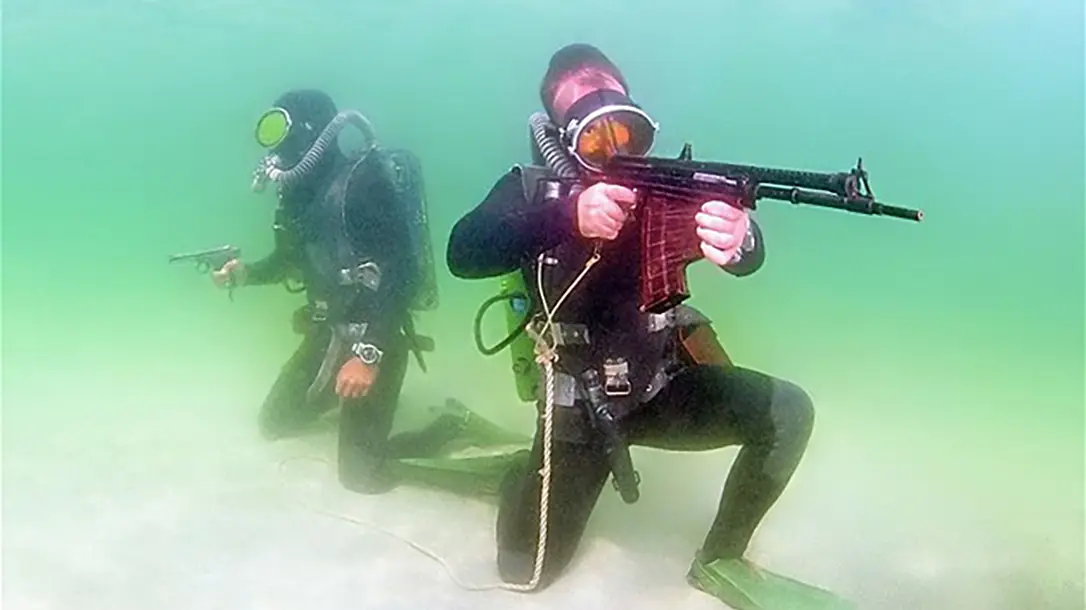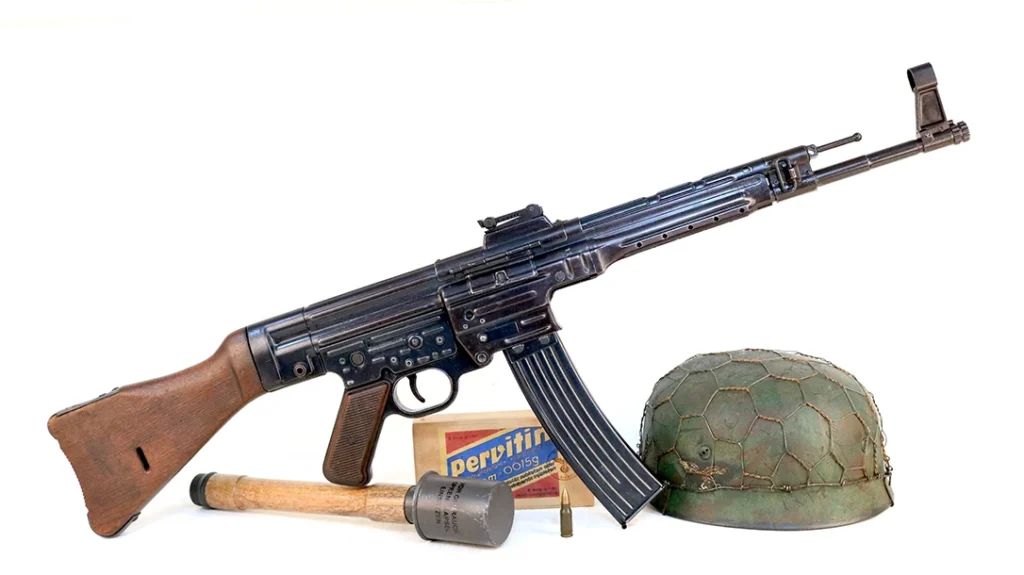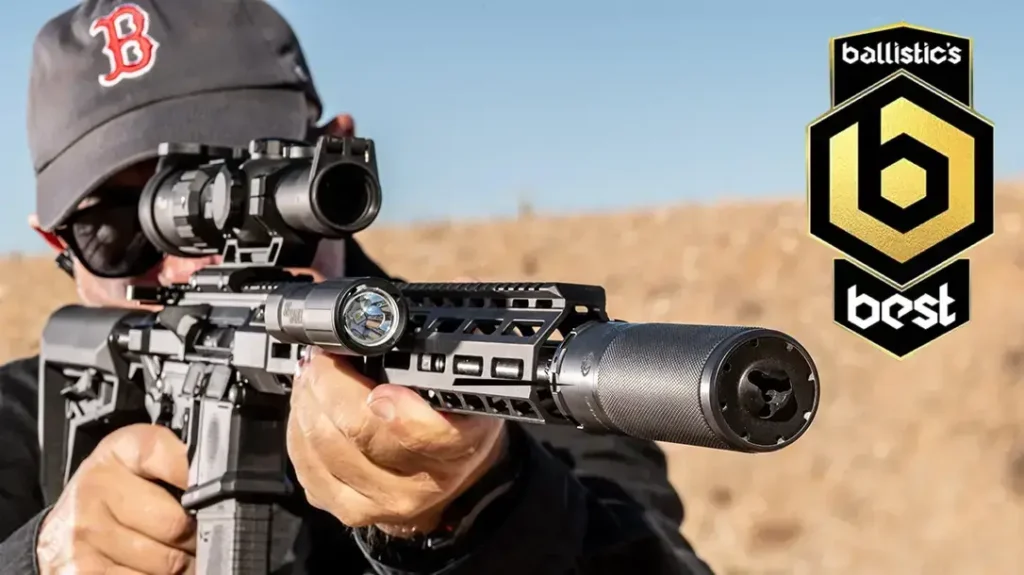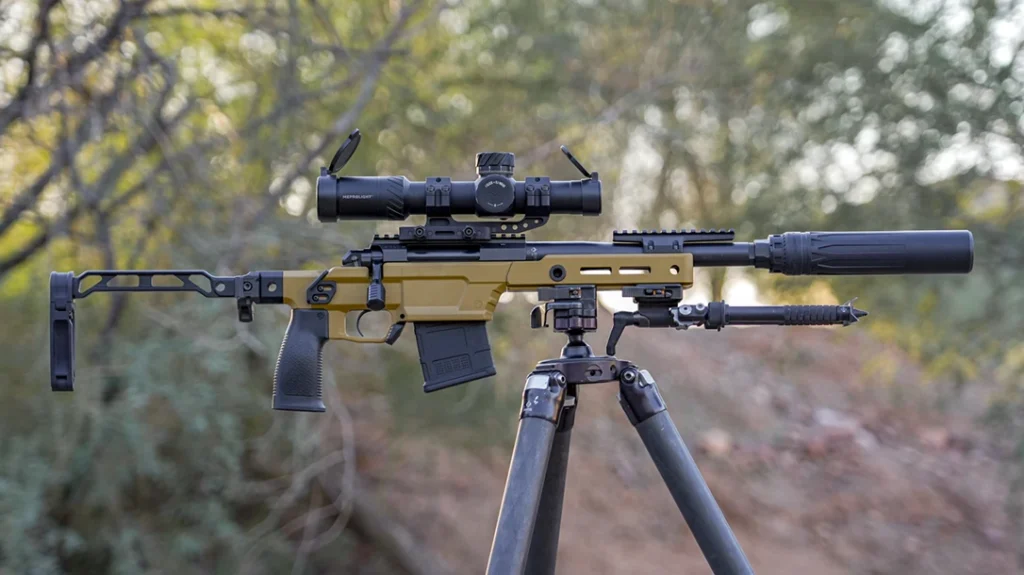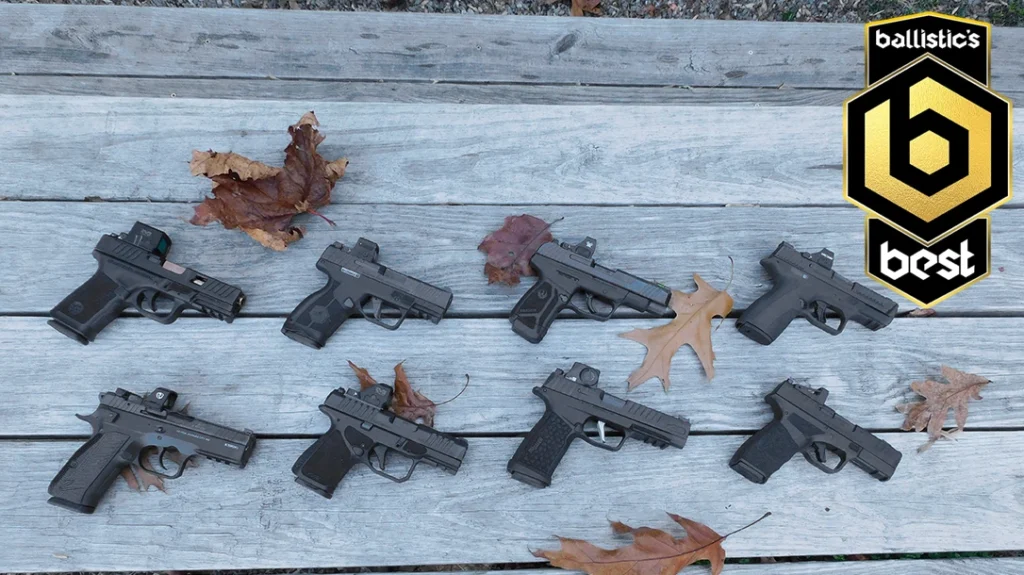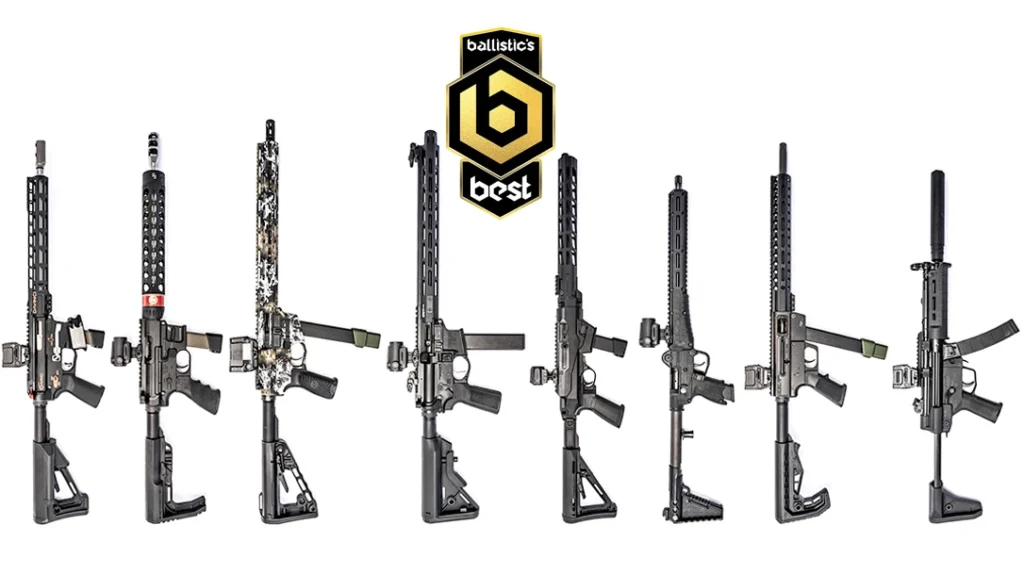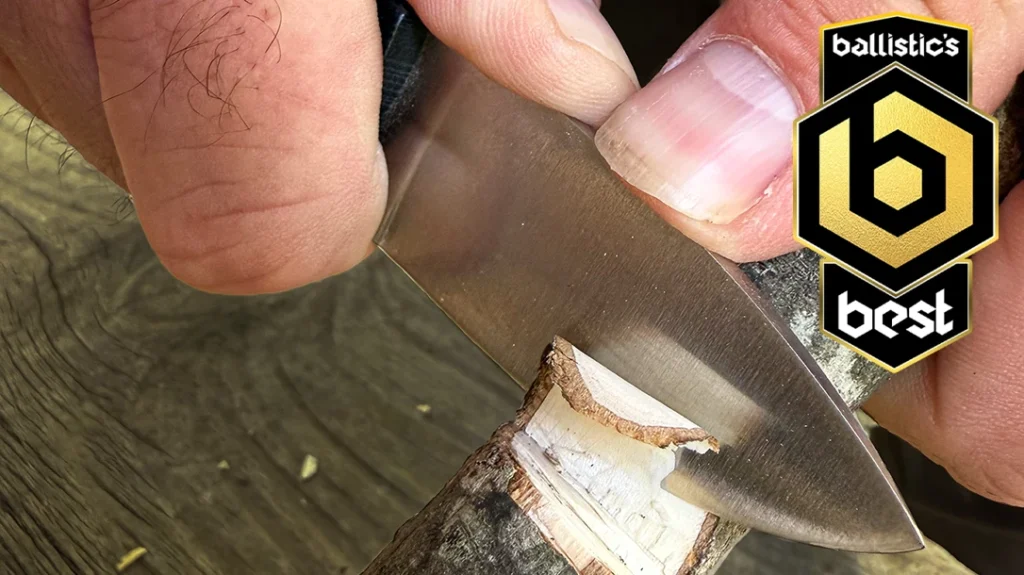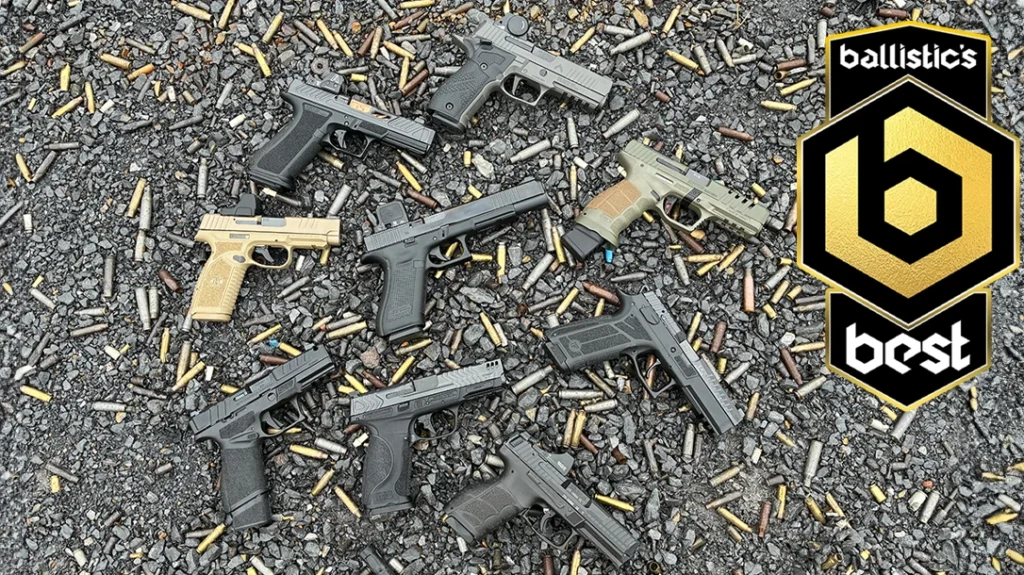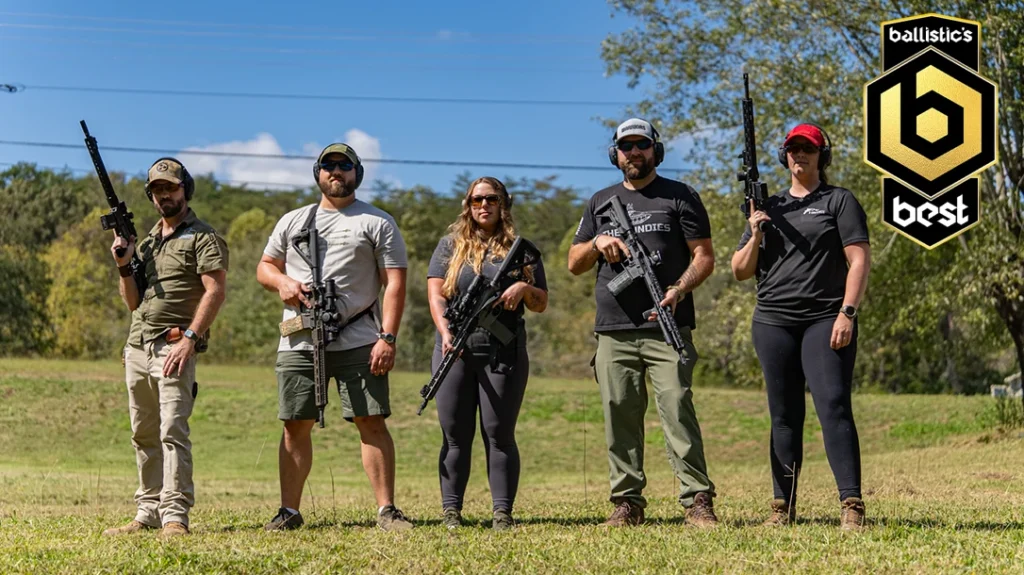It was the Cold War, and the Soviet Union was working to build the world’s largest Navy. Along with ships, they had multiple companies of underwater commandoes. Their goal in that arena was to outdo the US Navy SEALs. Of course, they would need guns when you have a small army of underwater commandos. Not just any gun. They wanted a gun that they could fight with while underwater. The result was the APS Underwater rifle.
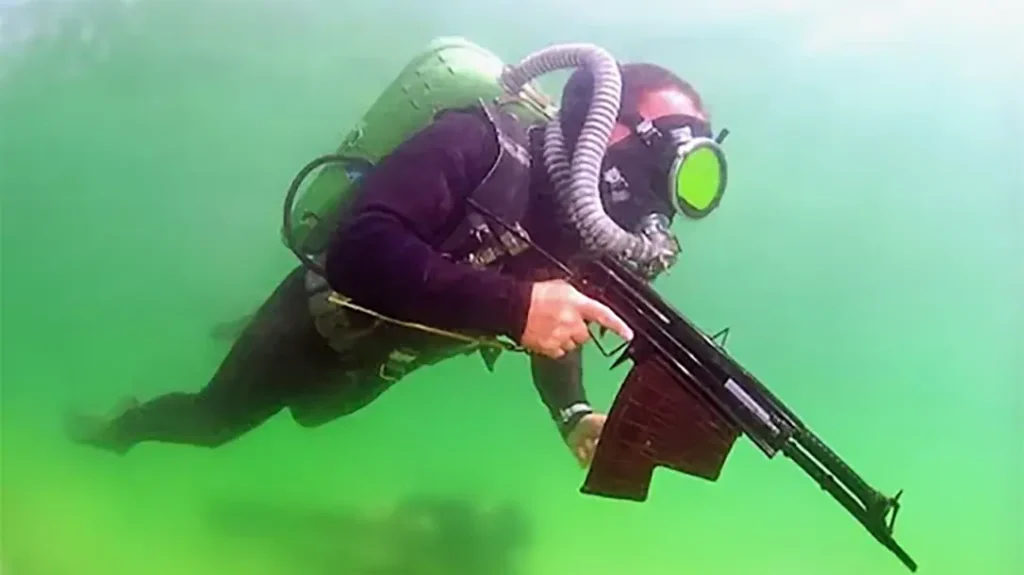
Developed During the Cold War, The APS Underwater Rifle is Unique
The APS (Avtomat Podvodny Spetsialnyy) underwater assault rifle is a specialized rifle developed by the Soviet Union for underwater combat. Unlike conventional rifles that are ineffective underwater due to hydrodynamic resistance, the APS was designed to provide effective firepower for Soviet combat divers.
Advertisement — Continue Reading Below
During the 1960s and 1970s, Soviet engineers and the TsNII TochMash design bureau worked on developing a solution to equip naval special forces with a weapon capable of engaging underwater threats. The result was the APS underwater rifle, which entered service in the 1970s. It became the primary firearm for Soviet and later Russian naval combat divers. It is important to understand that the Soviets were dead serious about this, and the APS was not a short-run prototype.
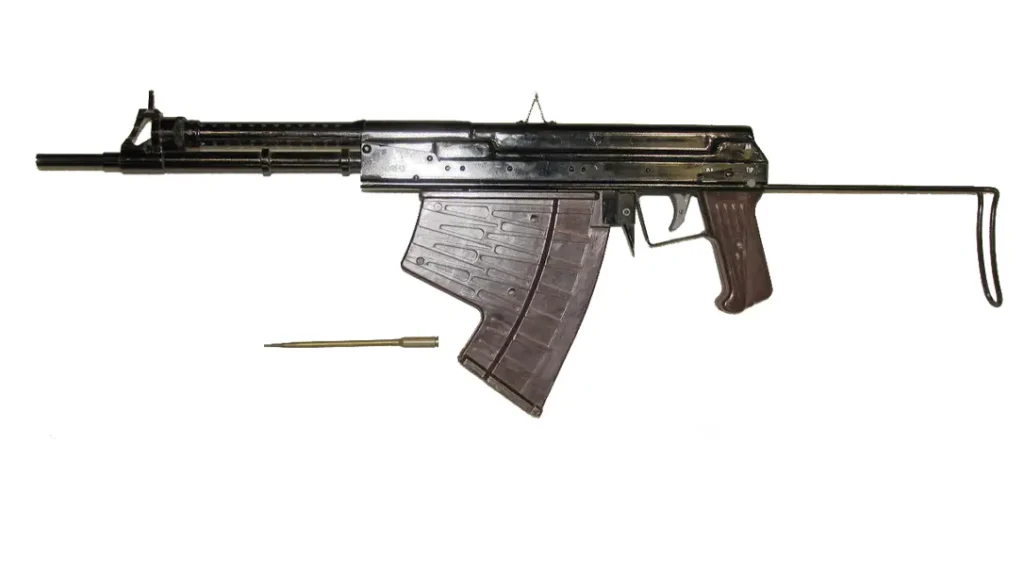
Shoots Darts
The APS has the general aesthetics of the classic AK47, but that’s where the similarities end. The APS had a unique construction and ammo for the job. Unlike standard bullets, which are ineffective underwater, the APS fires 5.66×39mm MPS steel darts instead of conventional bullets. These darts are significantly longer than regular bullets and rely on supercavitation—a process where an air bubble forms around the projectile, reducing hydrodynamic resistance and allowing it to travel further underwater.
Advertisement — Continue Reading Below
The Soviets designed two versions of ammo for the underwater gun. The first was the MPS, the true “fight in the ocean” round, designed for use at deeper depths with more stability. The second flavor was the MPS-U, which could be used both underwater and in the air.
The APS came standard with a 26-round detachable box magazine. As you can see, it was sizeable to accommodate the dart-style ammo. The rifle operates using a gas-operated, rotating bolt mechanism and a smooth-bore barrel. Construction-wise, it was made of stainless steel with specially designed corrosion-resistant parts.
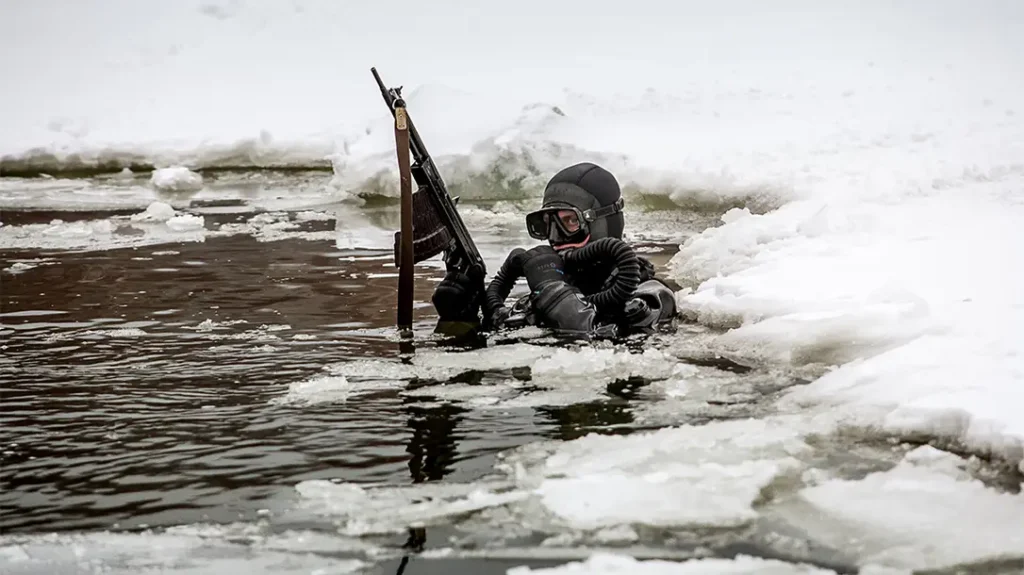
Advertisement — Continue Reading Below
Accuracy
Like you, I was curious about range and accuracy. The standard was to hit a man-sized target, and the effectiveness depended on depth. At depths up to 36 feet, it had an official range of up to 40 yards. That range falls as you get deeper. At 295 feet, it was only 15 yards. Now, that is some deep water to be fighting in, but the Soviets tried to plan for everything. When real-world physics gets involved, however, things change. The APS’s lack of rifling and suboptimal aerodynamics brought its true effectiveness into question.
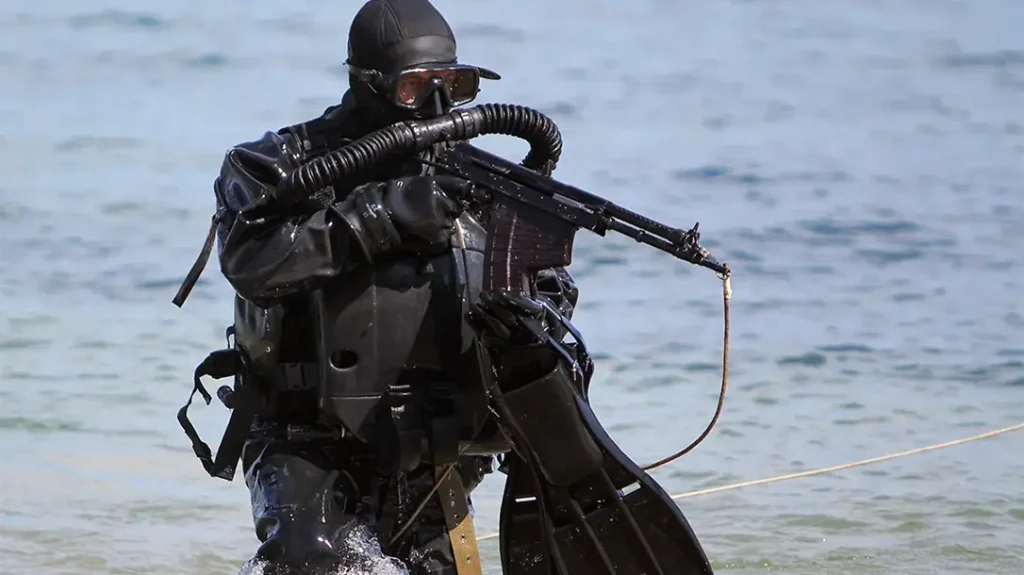
The APS Underwater Rifle
The APS underwater rifle is undoubtedly unique. To many people, it is a rifle to solve a nonexistent problem. After scouring as much history as possible, I could not find documentation of an actual underwater gunfight. Yes, I know James Bond saw some underwater action, but we can’t really count that. According to records, the APS is still listed as an in-service weapon with the Russian Navy. While not very practical, it represents the ingenuity of hard-core weapon designers.
Advertisement — Continue Reading Below
The APS Underwater Rifle Specs
| Weight | 6.6 pounds |
| Length | 33 inches |
| Barrel length | 11.8 inches |
| Width | 2.55 inches |
| Round | 5.66 x 39 Steel dart |
| Action | Gas actuated |
| Rate of fire | 600 rounds per minute (on land) |
| Muzzle Velocity | 1181 FPS |
